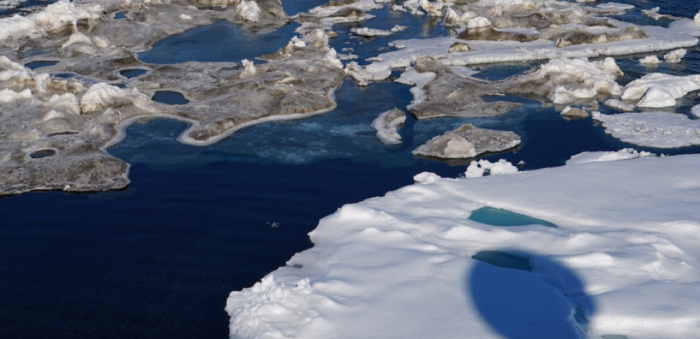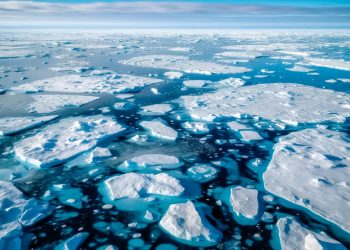After declining fast through July, sea ice extent decline slowed during the first two weeks of August, with a new record September minimum being highly unlikely, the National Snow & Ice Data Center (NSIDC) informed. It also informed that the sea ice extent for 2018 falls between the fourth and ninth lowest in the 40-year satellite record.
As of August 15, Arctic sea ice extent was 5.7 million square kilometers. This is 1.58 million square kilometers below the 1981 to 2010 average, but 868,000 square kilometers above the record low at this time of year recorded in 2012.
[smlsubform prepend=”GET THE SAFETY4SEA IN YOUR INBOX!” showname=false emailtxt=”” emailholder=”Enter your email address” showsubmit=true submittxt=”Submit” jsthanks=false thankyou=”Thank you for subscribing to our mailing list”]
The Northern Sea Route appears open, though ice is lingering near the coast in the East Siberian Sea. Scattered ice floes are likely present along the route. A large patch of sea ice also persists in the southern Beaufort Sea.
In addition, through the first two weeks of August, ice extent declined at approximately 65,000 square kilometers per day, slightly faster than the 1981 to 2010 average of 57,000 square kilometers per day. Sea level pressure was above average over the central Arctic Ocean, a change from last month. Temperatures were generally 1 to 5 degrees Celsius above average over much of the Arctic Ocean for this period.
As for September, NSIDC mentioned that a simple way to project the upcoming annual minimum extent involves using the daily rates of change from previous years and applying them to the current sea ice extent. After the 2005 to 2017 average rate of change between August 15 and the minimum, the extent is projected to reduce to an annual low of 4.55 million square kilometers
If sea ice extent continues at the rate of ice loss seen in 2008, the fastest recorded, the minimum at the end of summer would be 4.20 million square kilometers, or the fourth lowest minimum in the satellite record. If sea ice extent continues with the rate for ice loss from 2006, the slowest recorded, the minimum would be 4.90 million square kilometers, or the ninth lowest in the satellite record. However, it is possible that the rate of change through the remaining summer will be unprecedented in the satellite record (either faster or slower).


























































